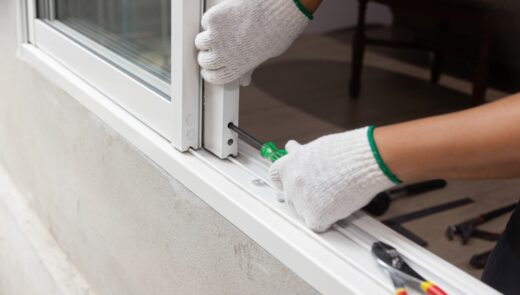When designing a high-performance sliding door system, the roller is a critical component that determines long-term user satisfaction. A poorly matched roller can compromise the entire assembly, leading to resistance, noise, and premature wear—problems that no manufacturer wants associated with their brand.
That’s why forward-thinking manufacturers don’t rely on generic, off-the-shelf rollers. Instead, they choose proven, tested solutions—engineered for long-term durability under real-world conditions. Our sliding door rollers are developed in collaboration with OEMs and system designers, ensuring seamless integration with your track profiles, mounting configurations, and performance requirements.
With options for custom dimensions, wheel materials, and mounting systems, our rollers are not just components—they’re a strategic part of your door system’s performance story. Choose a partner who understands that precision, consistency, and quiet operation aren’t just features—they’re expectations
Key Factors to Consider When Choosing a Door Roller
Your sliding door roller must bear the brunt of your door’s weight day in and day out, often for years, before showing signs of wear. When hunting for a replacement sliding glass door roller, don’t just grab the first option you spot online. Your choice will determine whether your door floats open or continues fighting you every morning. Consider the following:
- Material quality makes all the difference in how your door performs. Polymer wheels tend to run quieter and won’t damage your tracks, and provide a great long-term option, especially in coastal areas where salt air wreaks havoc on steel materials. Steel rollers may feel great at installation, but over time, they can cause damage to tracks and require track replacement.
- Don’t overlook weight capacity. Check your door’s specs or weigh it (carefully!) before shopping.
- Compatibility goes beyond just fitting in the track. The housing that attaches to your door frame comes in various shapes and mounting styles.
- Many quality rollers offer adjustability features, letting you fine-tune door height without complete disassembly. These adjustable rollers can compensate for settling foundations or frames that aren’t perfectly level.
- Lastly, consider the durability and maintenance requirements of your new choice. Will the roller need regular lubrication? Does it have seals to keep grit out? A sealed bearing system might cost more initially, but it saves countless headaches down the road.
Types of Sliding Door Rollers
When shopping for sliding door tracks and rollers, you’ll encounter several distinct varieties, each designed for specific door types and usage patterns:
- Most residential doors use what the industry calls tandem rollers—pairs of wheels mounted on a single housing that evenly distribute the door’s weight. These come in either convex (slightly rounded) or flat wheel designs, depending on your track style.
- Single-wheel rollers might suffice for lighter applications, though they’re increasingly rare in modern doors. At the opposite end, commercial-grade quad rollers feature four wheels per housing, designed for those massive glass walls you see in storefronts.
- Material options typically include nylon composite wheels (quieter, gentler on tracks) or steel wheels (longer-lasting but potentially noisier). The housing might be zinc-plated steel, stainless steel, or high-grade polymers for coastal environments.
One standout in today’s market is the “TraXtar™ Duo” from Anthony Innovations. These durable rollers support up to 110kg (250lbs) per assembly (220kg (500lbs) per door) and feature a glass-filled nylon housing for enhanced strength and market-leading long-term performance.
The TraXtar™ Duo’s end-adjustment feature lets you fine-tune door height without removing panels, while their polymer wheels operate with whisper-quiet smoothness. An ingenious design allows the inner carriage to be removed for maintenance without dismantling the entire door.
For thermally efficient doors, these rollers maintain the integrity of thermal breaks, preventing unwanted heat transfer that can compromise energy efficiency.
Maintenance Tips for Long-Lasting Door Rollers
Ensuring your sliding doors glide smoothly for years requires consistent maintenance of the rollers. Neglecting them can lead to sticking, grinding, and eventual failure. By incorporating a few simple practices into your routine, you can significantly extend their lifespan:
- Keep the tracks clean, as dirt, dust, and debris are the primary enemies of smooth operation.
- Regularly vacuum the tracks (every few months) and wipe them down with a damp cloth.
- Pay attention to the rollers themselves, removing any accumulated grime.
Frequently Asked Questions
How do I know what size door roller I need?
To determine the correct size door roller, we recommend removing one of the existing rollers from your door for measurement. Measure the roller’s diameter (the height of the wheel) and its thickness (the width of the wheel). Note the shape of the wheel’s edge (e.g., flat, concave, convex) and the type of assembly (single wheel, tandem/double wheel). Assess the width and height of the carriage and how it is mounted into the door. Assess the width and height of the carriage and how it is mounted into the door.
How often should I replace my sliding door rollers?
There isn’t a strict timeline for replacing sliding door rollers; it depends heavily on usage frequency, door weight, roller quality, environmental conditions (like coastal salt exposure), and how well they’ve been maintained. Instead of a schedule, look for signs of wear. You should consider a replacement if the door becomes difficult to slide, makes grinding or scraping noises, feels bumpy when moving, or if the rollers are visibly cracked, chipped, rusted, or have developed flat spots.




